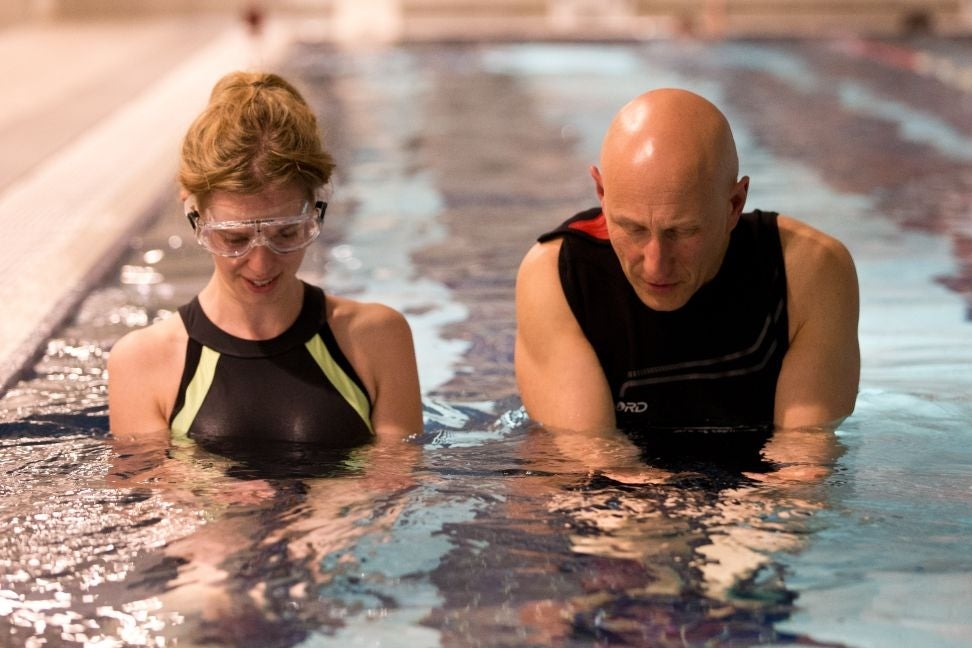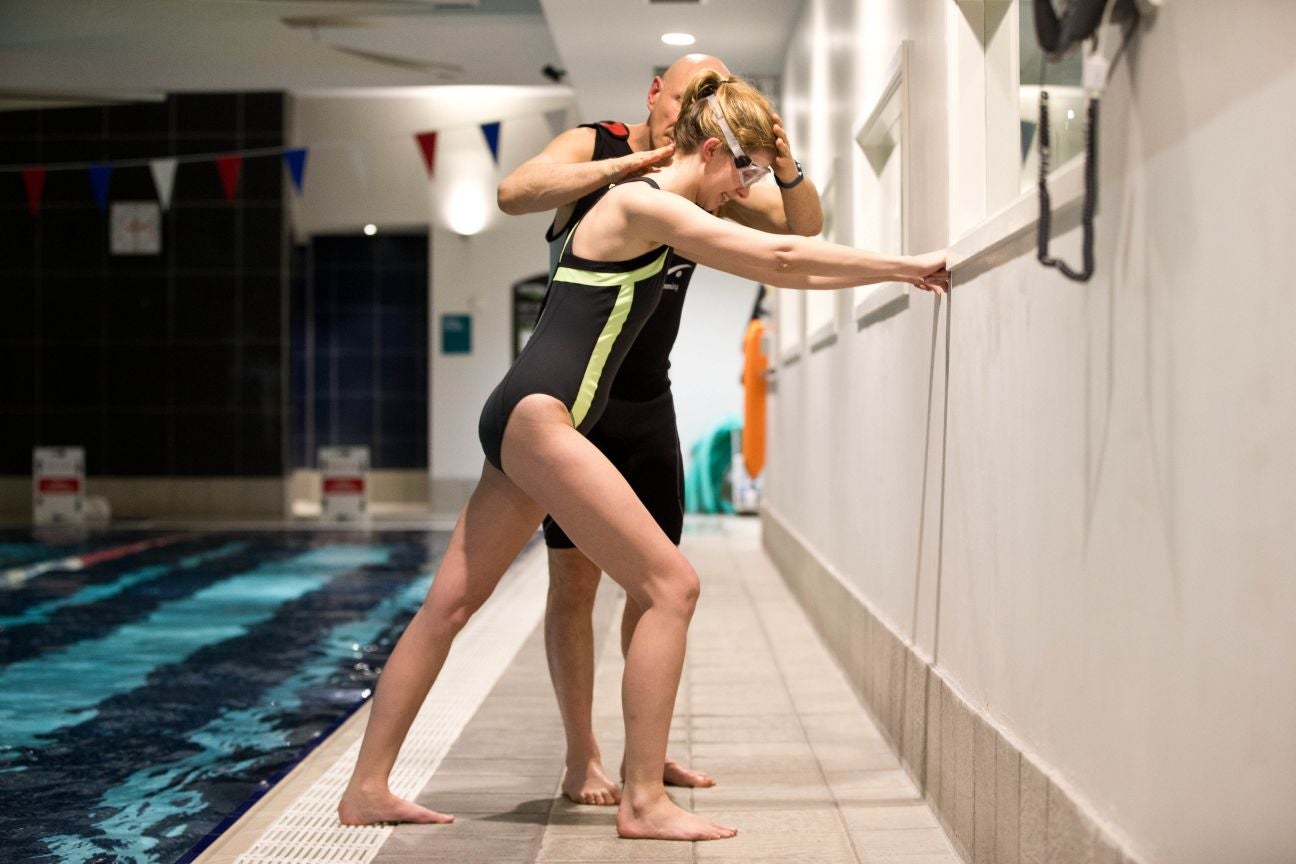The Art of Swimming: The way many people swim might be doing them more harm than good, says a man bringing posture to the pool
'When I finally 'get it', it feels less like swimming, more like weightless gliding'

First things first: I can swim – in answer to the question that everyone asks when I tell them I’m going for a swimming lesson. (It occurs to me that no one would do the same if you said you were off to perfect your tennis or golf skills.) But my breaststroke is less Rebecca Adlington, more granny-who-doesn’t-want-to-get-her-hair-wet. And according to Steven Shaw, founder of The Art of Swimming, my strained lengths with my head sticking out the water aren’t doing me any favours.
Shaw developed his method 25 years ago, after years of competitive swimming left him with neck and back problems, leading him to train as an Alexander Technique teacher. During his training, Shaw worked as a lifeguard, and it was while observing people’s bad posture in the pool that he realised Alexander’s principles of alignment could be applied to the water, too. The Art of Swimming was born and Shaw has become something of a guru to the thousands of people he’s taught around the world. With his bald head and cult-like following, he has been called “The Buddha of Breaststroke”. One devotee of his style tells me that after a class with Shaw you feel like “you’re not swimming in the water, the water’s swimming you”.
Which is why I’m now in a pool in Paddington, wearing giant goggles that make me look like I’m about to go welding – Shaw tells me that triathletes use them, for their range of vision – while wading sideways like a crab. This move is called The Bellows and is designed to co-ordinate breathing and movement. Memories of swimming lessons at school (splashing around feeling cold while a teacher shouted instructions from the side) dissipate as Shaw gets into the pool beside me and uses his hands to pull me along the water, carefully adjusting my head, neck and back while I glide.

We all know how good for us swimming can be: it tones the core, arms and legs, helps you relax and, when done regularly, can reduce the risk of heart disease, Type 2 diabetes and stroke. But for whatever reason – whether it’s the closure of public pools or that getting wet seems too much hassle – nobody’s swimming any more. Around 245,000 people binned their goggles last year and one in five adults in England can’t swim. And, according to Shaw, those that can aren’t swimming properly.
“The majority of people are doing more harm than good to their bodies when they’re swimming,” he explains. “I often watch people battling the water, gasping for breath. They don’t get very much pleasure from it. Breaststroke is most people’s default stroke, but having your head up, as a lot of people do, acts like a brake, so your arms and legs need to work harder to defeat that resistance.” All of which means I’ll have to put my face in the water. And since I hold my nose if I’m even thinking about going under, this could prove to be a problem.
But Steven’s speciality is adults who can’t swim – whether that’s because they’re disabled, have a phobia of water or just never learned. “I’m teaching a woman at the moment who had such a severe anxiety of water that she couldn’t even have a bath,” he says. “She was shaking just looking at the pool, but after a few sessions she’s now comfortable getting in.”
I can remember as a child the horrible sensation of water gushing up my nose and not being able to breathe for what felt like several minutes (but was probably seconds). “People who have anxiety about putting their face in the water think that it will take a few months, but within one or two sessions they can enjoy it,” promises Shaw. “If you’ve had this fear for a number of years, and you move through it, it’s a real liberation.”
We spend some time collecting water in our palms and pouring it over our heads to combat the natural reflex we all have to pull our face away from a splash. At first it’s uncomfortable, then I just feel stupid, but eventually it feels calming. Well, as calming as it’s possible to feel with chlorine-y liquid running down your face. Shaw demonstrates that the correct angle of my head guarantees no water can go up my nose, as does breathing out. Soon, I’m swimming on my own, with my head down (no nose-holding!), coming up for air in time with the movements of my arms and legs. The moment when I finally “get it” feels less like swimming, more like gliding weightlessly through my own underwater world. Keeping the rhythm and breathing in sync is actually very meditative. Or as Shaw poetically puts it: “Swimming is like writing a sentence, and the breathing is the punctuation.”
I feel as streamlined as an otter, but then he films me on an iPad and shows me exactly what I’m doing wrong – head out higher than it needs to be when I come up for air, legs not quite in sync. Still, once I’ve perfected the stroke, it may feel slow, but I’m actually going much faster than I did “old lady” style. I’m so happy about finally putting my face in the deep end that I get carried away with breathing out bubbles. “Try to sound less like a Jacuzzi,” he laughs.
Shaw now spends most of his time training other people how to teach his method, and there are 250 Art of Swimming instructors worldwide, mostly in the UK and Portugal. “Some of them are physiotherapists, some are swimming teachers, some are Alexander Technique teachers,” he explains. “We have people training in their early twenties right through to their late sixties, and now we’re starting to train teachers in Greece, Germany, Holland and the US. Swimming is the only sport that you can do for your whole life, from a baby to 70-plus. You can just keep going. My mother is in her eighties and she’s still doing a kilometre of crawl every day.”
Ah yes, the crawl. The stroke that separates the part-time pool goers from the pros. When Shaw demonstrates it, it bears no resemblance to the thrashing, aggressive windmilling down the lane that you usually see. He turns his body almost totally to the side with every arm movement, there’s barely any splash – it looks graceful and effortless. I’m really keen to have a go, so we break down the crawl into poses that feel like a cross between fencing and Tai Chi.
All that breathing has left me feeling light-headed and a bit euphoric, so I can see why Shaw makes people evangelical. “Every person has an inner mermaid or merman,” he says. “If they say they don’t like swimming, it’s just because they have had a bad experience at some point. Unless something traumatises us, being in the water is a very natural activity. That’s my vision – to give people the right tools so that they can fulfil their potential in the water.”
It’s amazing that something I’ve struggled all my life with – putting my face underwater – can be overcome in one session. I could be an Art of Swimming convert, too. In fact, if you see someone in the pool who looks like an otter doing a Jacuzzi impression – that’s probably me. µ
For more information on The Art of Swimming, visit artofswimming.com. Prices start at £199 for a six-week course as one of a group of four to six swimmers
Join our commenting forum
Join thought-provoking conversations, follow other Independent readers and see their replies
Comments